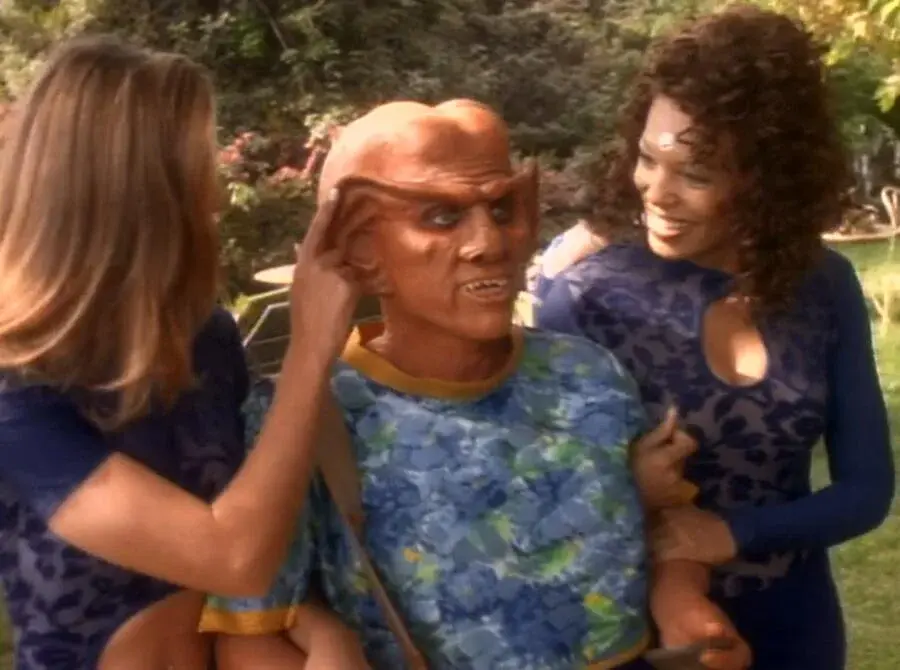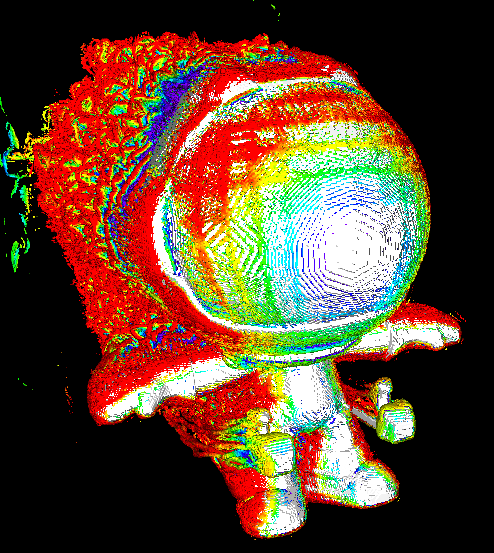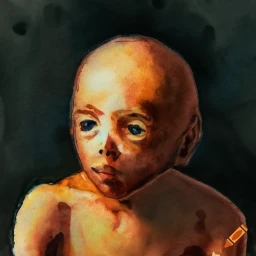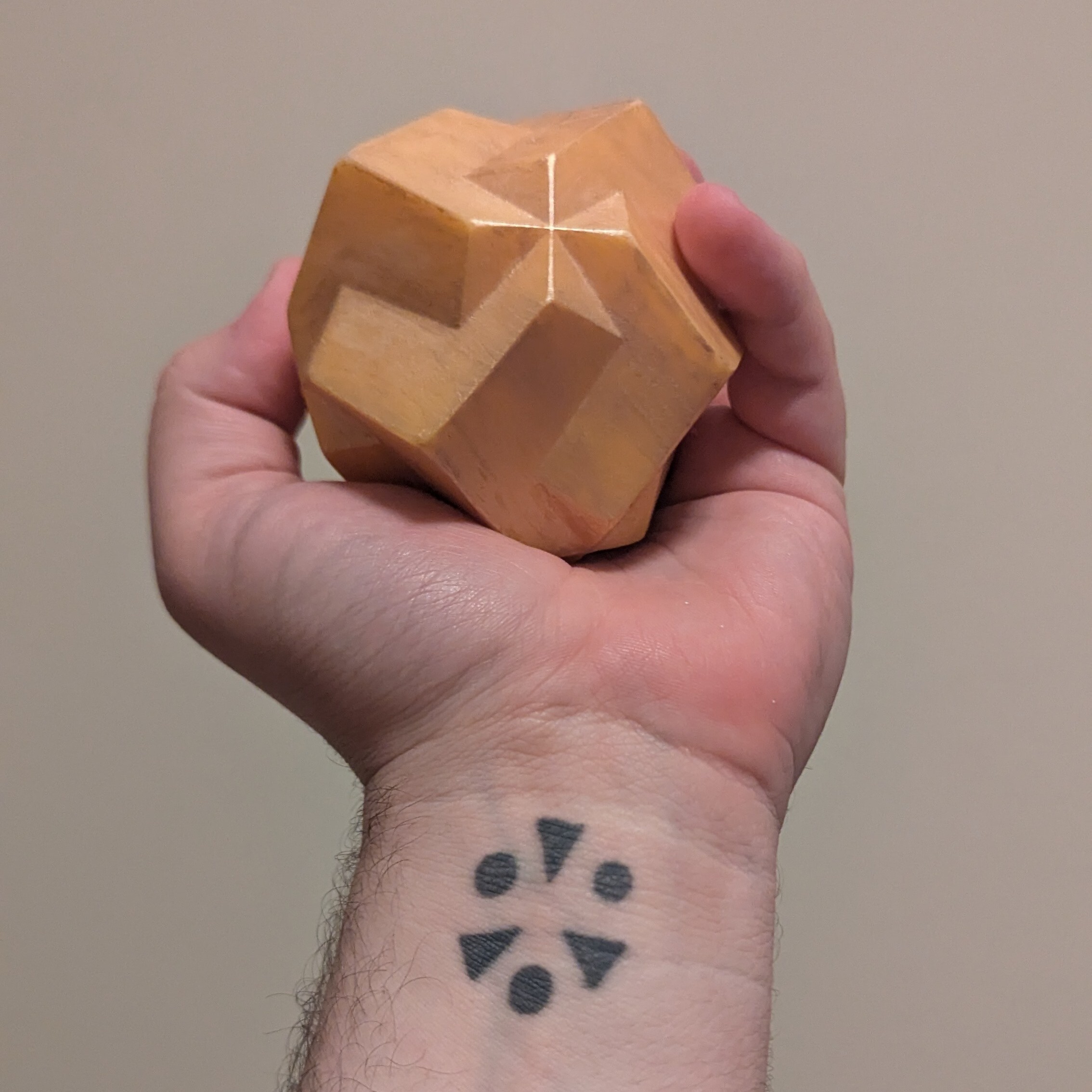Ray tracing isn’t supposed to make things look better, it’s supposed to save development time
If you spend enough time on lighting you can make static lights look better but that’s just it, it takes longer so it costs more
rt is a marketing trick very few games are made in a way that makes it look better
The Finals uses rxgti and the only difference between raytracing off and on is the speed at which the lighting changes within a scene.
I see little benefit from raytracing in many games. And would prefer the implementation be used in other games.
I haven’t played the finals myself but as of the pre-release version when I watched a video about it lighting didn’t update at all without raytracing enabled. It is pretty hard to get any sort of dynamic lighting without raytracing. If not impossible, depending on how you define raytracing. But basically if they have a dynamic lighting feature that works without ‘raytracing’ they have to create a whole other GI system using world-space probes and maybe even dynamically voxeliIng the entire scene. Neither of which are easy on performance, but usually not as bad as normal hardware RT and restir. Neither of those are good at reflections or fine detail, which is why games that want to look better than that usually switch to doing it the normal way.
I think they’re using the SHaRC implementation in RXGI for when you disable raytracing.
They’re forthcoming about using rxgi. That said it does work very well even on non-raytracing capable hardware.
It says on that page that SHaRC requires raytracing capable hardware. I guess they could be modifying it to use their own software raytracing implementation. In any case it’s the exact same math for either hardware or software raytracing, hardware is just a bit faster. Unless you do what lumen did and use a voxel scene for software raytracing.
never got the point of raytracing. screen space reflections look the same and save so much performance.
“I have a shitty computer and can’t play my single player game at imperceptibly fast frame rates boo boo boo.”
I think raytracing is fine for games that want a lot of realism. But I’m playing games with monsters and fantasy. My suspension of disbelief isn’t going to break because reflections aren’t quite right.
But I’m pretty much in the camp of, I want my games to look and feel like games. I like visual cues like highlighting items I can interact with or pick up. So lighting is always non-realistic.

What game is this?
Call of Duty Modern Warfare 2
Pokémon Ruby/Saphire/Emerald
Dark Souls 2
Yes, cool. But annoying after the first minute. And way too reflecting.
<.< How is that annoying?
Distracting, if the only thing moving else are NPC and mobs.
Look at Tiny Glade, it’s a great example of what raytracing can bring to a stylized game. (They did use their own raytracing pipeline different from the usual - in their own words, re-stir was overkill for what their game needed). Or like 95% of animated films. Including Arcane but excluding Stray.
I have seen FEW games that really benefit from RT. RT is a subtle effect because we’we got pretty good at baking and faking how light should look.
But even if its just a subtle effect, it adds so much, the feeling of the lighting is (for me) better wit RT, light properly propagates, bounces, dynamic geometry is properly lit. It’s just so much of these, on the bigger scale, tiny upgrades that make the lighting look a lot better.
It just sucks that the performance is utter shit right now. I hope in few years this will be optimised and we won’t need to sacrifice 1\2 of the framerate just to get lighting that feels right.
But you can bake additive environment lighting as well.
You can even bake additive lighting in layers, at least for things like street lamps, like coming out of a window onto a street, mostly static objects that can be turned on/off or broken…
And then just only use truly dynamic lighting for… people with lamps, flashlights, cars, truly dynamic stuff.
But that takes time, attention to detail, good map/level design, a bit of extra logic to handle everything… and the AAA paradigm is crank out flashy bullshit that runs like ass… unless you check out our marketing partner’s newest GPU!
Not everything, but most advanced dynamic lighting stuff that people associate with RT… can be done in an optimized way, leaving only a few elements to be truly fully, dynamically, brute force rendered every scene.
But, its about 95% easier for a game dev to (or management to tell them to) just let the game engine they paid for a liscense to (almost always UE) to handle it via assuming the end user has a GPU that costs as much as an entire PC 2 years ago.
Long, long gone are the days where game studios were largely defined by having their own engine, tailored to work optimally with the kinds of games they make.
Nearly no AAA game studios bother to make engines these days, nearly none of them have competent enough coders to actually make one… thats all subcontracted out now.
deleted by creator
Soooo, there’s a missing part here. The point (and drive) behind raytracing isn’t making games beautiful, it’s making them cheaper and less man-hour intensive to make/maintain.
The engine guys spend manyears every year working on that non-raytraced engine so it can do 150. They’ve done every cheat, every side step, and spent every minute possible making it look like they haven’t done anything at all.
The idea is that they stop making/updating/supporting non-raytracing engines and let the GPU’s pick up the slack. Then using AI to artificially ‘upgrade’ the frame rate with interpolation.
It’s not just a time limitation either tho, it also opens up a lot of room for artistic direction and game design
I don’t think you could possibly make something like Control’s shiny black blocks world look decent without raytraced reflections.
Also anything with significantly large dynamic geometry usually either needs like half of the level file size to be duplicated for every possible state, or some form of raytracing, to work at all. (There’s also things like voxel cone tracing that do their own optimized tracing but they also don’t really work in 100% of situations and come with their own visual downsides)
To see how far rasterization has been stretched, and how that holds back development - Path of Exile 2 has a tech talk about their bare minimum settings. Artists weren’t allowed to rely on anything that could be turned off. They begged the programmers for specific gimmicks, and turned that cheap nonsense into a million blades of grass, raymarched cracks in translucent ice, and soft shadows with no Peter Panning.
Or, picking one specific trick: ambient occlusion was half of why Crysis humbled $5,000 PCs. There’s a slide deck for how a superior version of the same effect was achieved in Toy Story 3 on the Wii.
Real-time raytracing was unobtanium for decades because we kept moving the goalposts. The entire 3D games industry is built on cheating around simple parallel techniques being too expensive. By the time hardware catches up to where doing something the simple way is feasible, complex software has faked a wild variety of other effects. Meanwhile: games are designed to rely on what’s available. All of the tells for proper path-traced lighting have either been faked or avoided. Games don’t even do mirrors, anymore.
There’s a reason RTX shows off games from the late 1900s.
It’s like when the unity game engine came out, somehow IMO, instead of having to program the whole thing up to your specific game, now everyone could make a 3D platformer.
It does, again IMO, take the soul out of games.
The earliest publicly available engines were id software engines. Whenever id developed a new one, they released the old one for free. That’s why we got a lot of doom clones and those doom clones became whole new genres of games. Thief, half-life, counterstrike, duke nukem, serious Sam, Wolfenstein, call of duty and many many many more games are direct descendants of developers playing with open source engines.
If your argument is that games are worse because developers don’t need to build their own engines anymore, you are dead wrong.
Lol you just explained it yourself.
We won’t go back in time to change things, and it was obvious what was going to happen, and it’s not always wrong either, but you can’t just brush away that everyone and their grandmother had to make a 3D platformer when unity came out.
Good or bad, it generally led people astray IMO.
There were lots of engines out there back in the day, the ID one was just the most polished (by far), you still had to know what you were doing, not so much with Unity.
Heh, I can appreciate that. That was also said when people stop using ASM and again when games started running in Windows. Not running games in dos felt really icky.
True, even if there weren’t that windows border, you just knew windows were lurking behind the game somewhere in the shadows…
I think it was 98 when I finally had a computer powerful enough to play quake and burn a cd at the same time. Dual processor, SCSI disk, quarter gig of ram.
I had like a 1GB hard drive … I was poor.
It’s not a trick, it’s just lighting done the way it should be done without all the tricks we need now like Subsurface scattering or Screen space reflections.
The added benefit is that materials reflect more of their natural reflection making all the materials look more true to life.
Its main drawback is that it’s GPU costly, but more and more AAA games are now moving toward RT as standard by being more clever in how it handles its calculations.
Yes, I’m sure every player spends the majority of their game time admiring the realistic material properties of Spider-Man’s suit. So far I’ve never seen a game that was made better by forcing RT into it. A little prettier if you really focus on the details where it works, but overall it’s a costly (in terms of power, computation, and price) gimmick.
Where is RTX being forced into? Haven’t seen a game where it’s not an option you have to toggle on first and it’s not like RTX is a lot of additional work for the developer, seeing how it in fact reduces the work necessary to make a scene look the way it should.
Yes, it’s stupidly expensive and not every game manages to benefit massively from it, but it can lead to some very pretty environments in games and it seems perfectly valid in those cases.
Also, some people do quite enjoy admiring the way the materials of various things end up looking. Maybe it’s not the majority of players, but some people quite like looking at details in the games they play.
There aren’t many but the new Indiana Jones and Doom games require ray tracing
To be fair… At least those 2 actually perform well.
Indiana Jones can run at high settings 1080p NATIVE at like 80 fps on a 3060, and Doom ran at like 80 FPS medium settings quality upscaled 1440p on my RX 6800XT which is like bad for RT lol
RT also makes level-design simpler for the development team as they can design levels by what-you-see-is-what-you-get method rather than having to bake the light sources.
Development and design can use RT all day long, that’s not the issue. They have the benefit of not having to run ray tracing in real time on consumer hardware. At the end of the day, unless they want to offload all of that computation load onto the customer forever (and I really mean all RT all the time), they’ll eventually have to bake most or all of that information into a format that a rasterizer can use.
The one benefit I see is that it simplifies lighting for the developer by a whole lot.
Which isn’t a benefit at all, because as of now, they basically have to have a non-raytrace version so 90% of players can play the game
But in a decade, maybe, raytracing will make sense as the default
I’ve always said that, because the baseline GPUs are the RTX 3060 and the RX 6700 (consoles equivalent)… And those GPUs aren’t doing amazing RT so, what’s the point in pushing it so hard NOW for the 1% of users with a 4090 or whatever?
Hell, I got a RX 7900 XTX and for some games, my fps are not consistently at 60 fps
Even with raytracing there is still a lot of shortcuts and trickery under the hood. Ray tracing is the “cheating” form of path tracing.
raytracing still needs to do subsurface scattering. It can actually do it for real though. It also “wastes” a lot of bounces, so is usually approximated anyway
Subsurface scattering is not one of the things you get automatically with ray tracing. If you just bounce the rays off objects as would be the usual first step in implementing ray tracing you don’t get any light penetration into the object, so none of that depth.
Maybe you meant ambient occlusion?
Games visuals are riddled with shortcuts and simplification.
You don’t think the way the water moves when your characters steps on a puddle, the smoke rises from fires or the damage on the walls are Physics Simulations, do you?!
It’s all a variation of a procedural noise such as
PerkinPerlin Noise, particle effects, or at best (for example, ocean simulation) some formulas that turn out to look good enough.(Want to see Physics Simulations in 3D generated worlds, look at Special Effects in Films).
Improving one element of game space visual fidelity - reflections - is nice but it’s unclear that it’s worth its downsides (more expensive hardware, slower performance) given how everything else is still one big pile of “good enough” shortcuts.
RT is of course a shortcut too, it’s not an exact representation of how light actually behaves…
If course, no renderer is really good enough unless it considers wave effects. If my game can’t dynamically simulate the effect of a diffraction grating, it may as well be useless.
(/s if you really need it)
That’s the thing: Ray Tracing as implemented on Graphics Cards (which is a subset of what’s done in offline rendering for things like Film) only makes 3D rendering environments a bit more realistic in the domain of lighting, not even the same as reality, and this domain is only a small part of the big fucking pile of shortcuts used for realtime 3D rendering, so this improvement leaves all other ways a game space diverges from reality the same.
Mind you, this partial Ray Tracing thing tainting shadows next to brightly lit colored objects and doing proper realtime reflections for all reflective surfaces would be great if one didn’t have to actually upgrade one’s hardware and the performance loss was small, but that’s not the case yet.
But you NEED the green and expensive GPU, otherwise you are missing out!!!
When I had a PS5 and Cyberpunk, I would sometimes switch ray tracing on and off to see if it made a huge difference. Well, the frame rate would be capped at 30 with it on…and I suppose if I stopped and looked around for a bit, it was noticeable, but honestly, I preferred the higher framerate. I’ve yet to see a game that really benefits from RT.
It’s mostly developers that benefit from RT long-term. Not now while it’s optional, but once it becomes a requirement, they can cut a couple of time-intensive steps from the development pipeline.
Can’t wait until my GPU needs 1000W to run :'(
I always try it both on and off for a while and see if that specific game gets nicer enough to where it’s worth having on. About a third of the games I’ve played with RTX looked better enough to keep it on. Some that really blew my mind all the way through with RTX on were Ghostwire: Tokyo, Cyberpunk 2077, Avatar: Frontiers of Pandora and Star Wars Outlaws.
The best examples of raytracing are in applying it to old games, like Quake II or Portal or Minecraft.
Newer games were already hitting diminishing returns on photo realism. Adding ray tracing takes them from 95% photo realistic to 96%.
I disagree - adding RT to games that weren’t designed for it often (but not always) wrecks the original art direction.
Quake II is a great example; I think the raytraced version looks like absolute ass. Sure, it has fancy shadows and reflections, but all that does is highlight how old the assets are.
Same with Minecraft. Minecraft looks like crap, and improving the lighting, shadows and so on just shows that off even more.
Minecraft is a game that’s deliberately not about the looks.
I’m a big fan of raytraced Minecraft, but I also generally use texture packs that benefit from ray tracing. I’ve found that rather than something for realisim, finding a high resolution cartoony texture pack makes RT shine for Minecraft. Because yes, the game looks bad on purpose, lean into that and make it cartoonier too.
It makes for great survival horror when you’re on the cutest cartooniest texture pack you can find and you’re out after dark without a torch or lantern and its just pitch black except for the light of the moon, barely illuminating silhouettes against the deep purple sky. You see the monsters approaching. You turn a corner and see it, the most adorable thing you’ve ever seen, with death in its eyes made visible only by your own reflected moonlight. It’s too dark to run. Good luck.
I disagree, I think a lot of raytraced shaders successful make the game look better while still leaning into the stylized look. I also think it’s unfair to say the game looks bad originally. It doesn’t look realistic, but it has a consistent and compelling visual style.
Look at the Minecraft update trailers for example. They go in that direction even further, by simplifying all of the textures. Yet even with the perfect offline path tracing, it doesn’t look bad.
often (but not always) wrecks the original art direction.
Which is sometimes a nice benefit. Not to talk about the “layer” in a specific color that suddenly goes away if you enable levelsplus in Reshade. The most extreme example i’ve seen was Elex 1.
Portal with ray tracing is a really cool demo, and Ive used it on the past to show off ray tracing. But man its just not as pretty as the old portal because it lacks the charm, its like those nature photos that are blown out with HDR
I always loved the graphics of Portal 2 but didn’t really see the appeal of those from Portal 1. I think the “with-rtx” version was more on the portal 2 side, so I was fine with it.
Ray tracing is just a way for nvidia to proprietize a technology then force the industry to use it all to keep Jensen in leather jackets. Don’t buy his cards; he has too many leather jackets!
deleted by creator
As I’m sure you already know the proprietary part comes from the implementation and built in hardware support for said implementation, which AMD is not compatible with (not in any usable way at least)
AMD also has hardware support for raytracing and both are using the same API for raytracing. Nvidia just has a head start and deeper pockets.
This isn’t Cuda or Gameworks where the features depend on Nvidia hardware, it’s more like Tessellation where they can both do it but Nvidia cards did it better so they pushed developers into adding it into games.
















